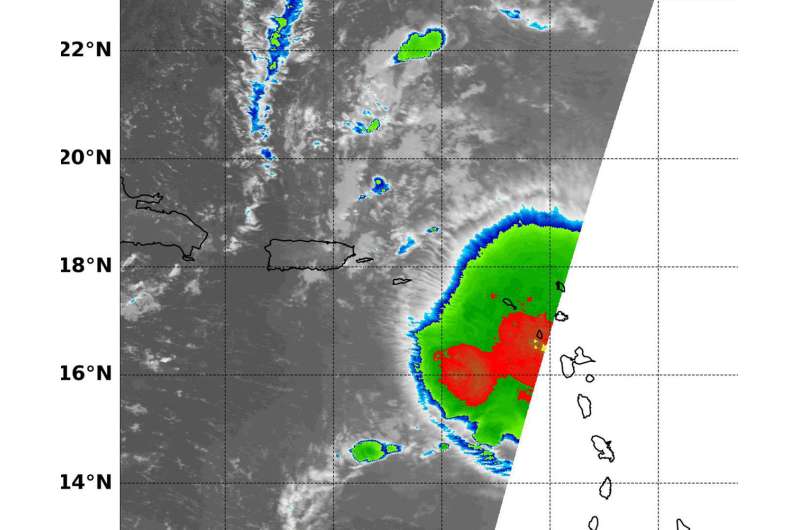NASA satellite tracking remnants of ex-Tropical Cyclone Beryl

Infrared imagery from NASA revealed two small area of strong storms remained in the remnants of Tropical Storm Beryl, moving into the eastern Caribbean Sea.
Beryl lost its tropical storm status by 5 p.m. EDT on July 8. Beryl degenerated into a remnant low pressure area before it crossed over the Northern Leeward Islands late on July 8.
NASA's Aqua satellite passed over Tropical Storm Beryl on July 9 at 2:35 a.m. EDT (0635 UTC) and analyzed the storm in infrared light. The MODIS or Moderate Resolution Imaging Spectroradiometer instrument aboard NASA's Aqua satellite revealed two small areas of strong thunderstorms where cloud top temperatures as cold or colder than minus 70 degrees Fahrenheit (minus 56.6 degrees Celsius). One area was in the eastern Caribbean Sea, the other over the Northern Leeward Islands. Cloud tops with temperatures that cold have the potential to generate very heavy rainfall.
At 8 a.m. EDT on July 9 the National Hurricane Center addressed the remnants of Beryl. NHC noted "An area of showers and thunderstorms associated with the remnants of Beryl is producing locally heavy rainfall and strong gusty winds over the northeastern Caribbean Sea and the northern Leeward Islands."
Forecasters at NHC expect the remnants to move west-northwestward for the next day or so, passing over the Virgin Islands and Puerto Rico today, and over Hispaniola tonight.
NHC forecaster Stewart noted that "Unfavorable upper-level winds and interaction with land should prevent redevelopment during the next day or two, but environmental conditions could become somewhat conducive for regeneration of a tropical cyclone later this week when the system is forecast to turn northward over the Bahamas and the western Atlantic."
Provided by NASA's Goddard Space Flight Center




















